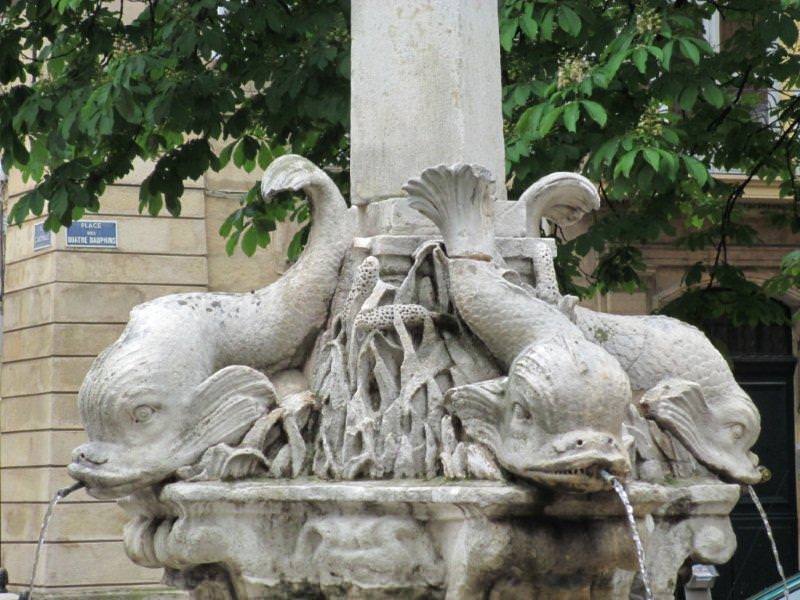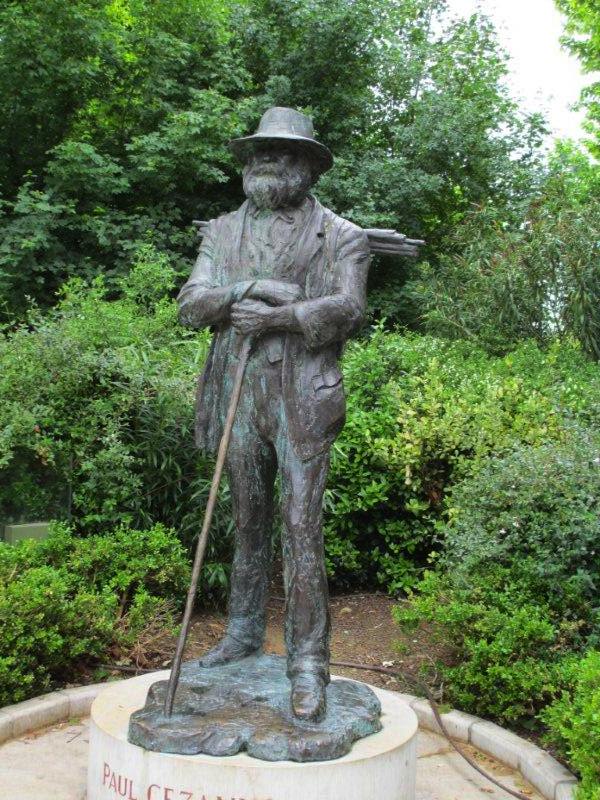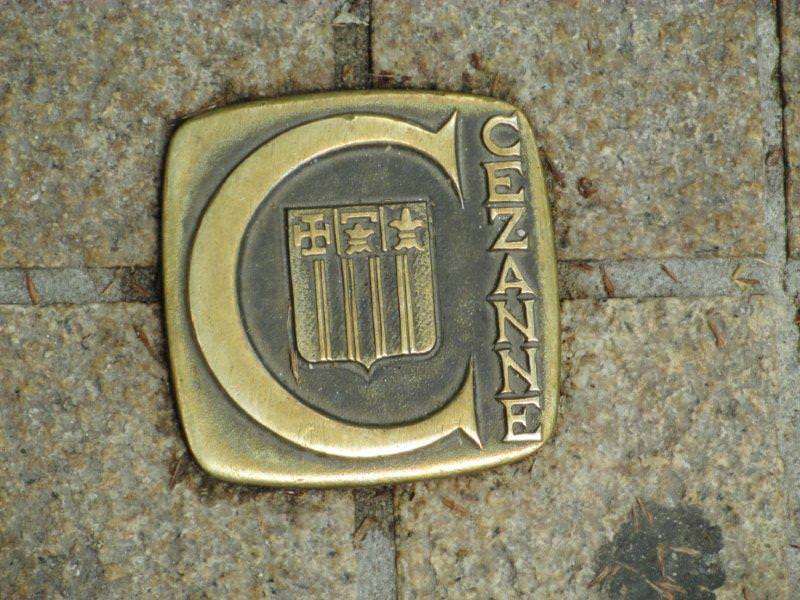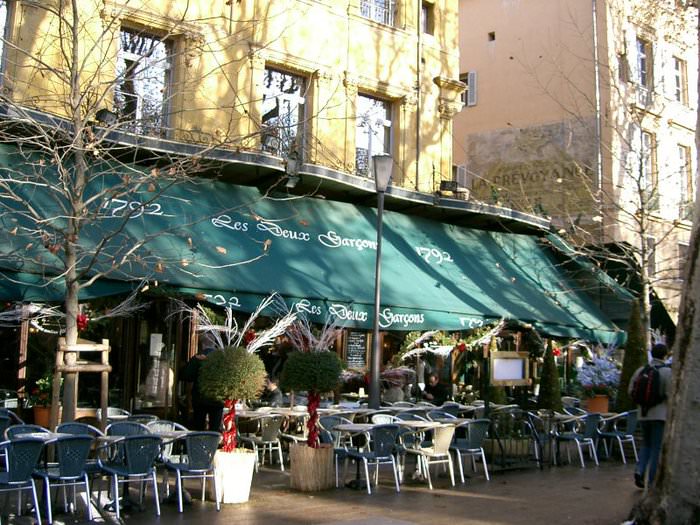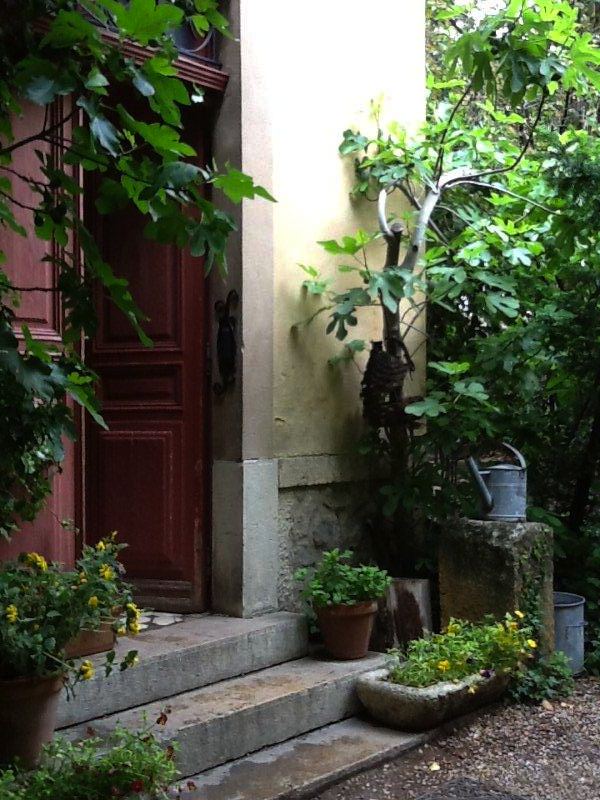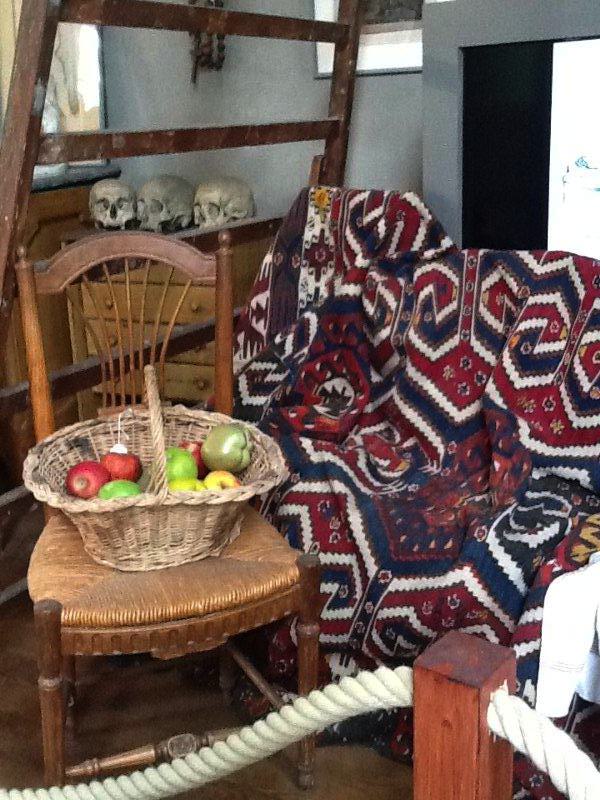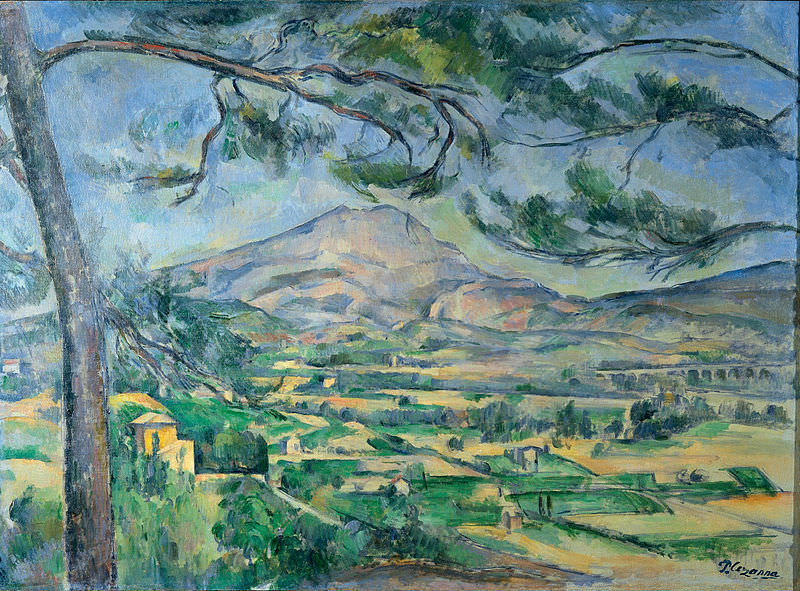Paul Cézanne was devoted to his hometown of Aix-en-Provence, in southern France, and it’s easy to see why. More than a hundred years after the great artist’s time, it’s still a lovely, livable city. “When you’re born here,” Cézanne said, “nothing else is good enough.” He was fascinated by the light of Provence and painted the region’s landscapes over and over—some 60 versions of Mt. St. Victoire alone. Cézanne’s works were rejected and criticized until his later years, but he became a major influence on modern artists, and today he gets a lot of attention in Aix. The city is proud of its famous artist and has placed bronze plaques marked with a “C” in the pavement to guide visitors through his life.
The walking tour starts at the foot of the wide, tree-lined boulevard, Cours Mirabeau, where a bronze statue of Cézanne faces Place General Charles de Gaulle and its imposing La Rotonde fountain. The figure was sculpted by Gabriel Sterk and donated to the city in 2006 by a group of individuals. From there, the walking tour, which is outlined in a pamphlet available at the tourist information center (300 Avenue Giuseppe Verdi), winds through the historic heart of Aix. It passes schools Cezanne attended, homes of his relatives and friends, the cafés he frequented, his studio, and the church where he was christened. Each place was a part of his interesting and sometimes eccentric life.
Paul Cézanne was born in January, 1839, to parents who didn’t marry until 1844, when Paul started elementary school. His father, a hat-maker, became a successful banker, and Paul grew up in a well-to-do family. He was close friends with the writer Emile Zola, and when Zola left Aix for Paris, Cézanne joined him, determined to devote himself to painting. This was against his father’s wishes, as Papa wanted his son to be a lawyer. There were no doubt many family rows until Papa gave in and provided a fund for Paul to live on while he pursued his art. Sales were few. Other artists, including Impressionists who’d been reviled themselves, scorned his progressive style, and shy Cézanne had few artist friends. He married his mistress and had a son with her (though he didn’t tell his father about the child for several years), but they separated and he disinherited her. An artist’s road seems to often be a rocky one.
Back to the walking tour: I have followed parts of it and intend to see the rest. A few highlights:
– Granet Museum, where Cézanne took drawing classes. The museum, greatly expanded since its restoration in 2006, displays archeological finds and works by various artists, as well as several Cézanne paintings.
– Brasserie les deux Garcons, on Cours Mirabeau. Here the artist often dined with his buddy Emile. Yes, the historic place (it began in 1792) is geared to tourists and is a bit pricy, but I enjoyed every minute of sipping coffee and people-watching on the terrace. The food and service were fine, and I got to practice speaking French with patient waiters.
– Church of La Madeleine, Place des Precheurs, where baby Paul was christened in 1839. The church has paintings by Rubens and Van Loo and an unusual 15th-century tryptich of the Annunciation.
– Saint-Sauveur Cathedral, an elaborate architectural mix of styles. With peaceful cloisters and impressive sculpture and artworks, it’s well worth a visit. Paul Cézanne’s funeral was held here in 1906.
The artist’s studio, a fairly steep walk outside the town center, is where his presence can be felt most strongly. Every morning he walked from his home on Boulegon Street to L’Atelier des Lauves to paint, returned to Aix for lunch, and trudged back again to paint until evening. After Cézanne’s death, the studio became run-down and was set for destruction, but 114 American admirers bought it, had it repaired, and donated it to the University of Aix-Marseilles. In 1969, it was ceded to the city of Aix as a museum.
In the upstairs studio, visitors can see copies of Cézanne’s paintings, his palette and easel, hats and coats, and the kinds of objects he collected for still-lifes—fruits, onions, pottery, skulls. There’s a gift shop on the ground level and a pleasant garden outside.
Two other significant sites are a short distance from Aix. One is the Bibémus Quarries, rugged sandstone in a pine forest, where Cézanne painted many landscapes. Some say this setting of blocky stones is where the Cubist style began. The other is Jas de Bouffan House, an 18th-century country mansion where the artist worked off and on for 40 years and produced some of his finest works. Both can be visited only on guided tours.
There are several ways to glimpse Cézanne’s views of the subject that obsessed him, Mt. St. Victoire. Maps to hiking trails and a bicycling and driving route are available for visitors interested in exploring St. Victoire, where light and shadows on the limestone are constantly shifting. Cézanne said that the mountain “…sent a great chill down my spine. If I could, through the mystery of my colors, share this chill with others, wouldn’t they perhaps have a more haunting sense of the world, so much more fertile and more delicious?”
Cezanne was a post-Impressionist whose work foresaw Cubism and Fauvism. His modern style was controversial, but eventually recognized as one of the greatest influences on the art of the future.
Written by Marilyn McFarlane for EuropeUpClose.com

